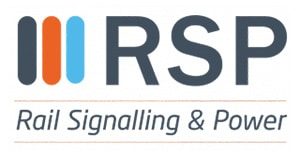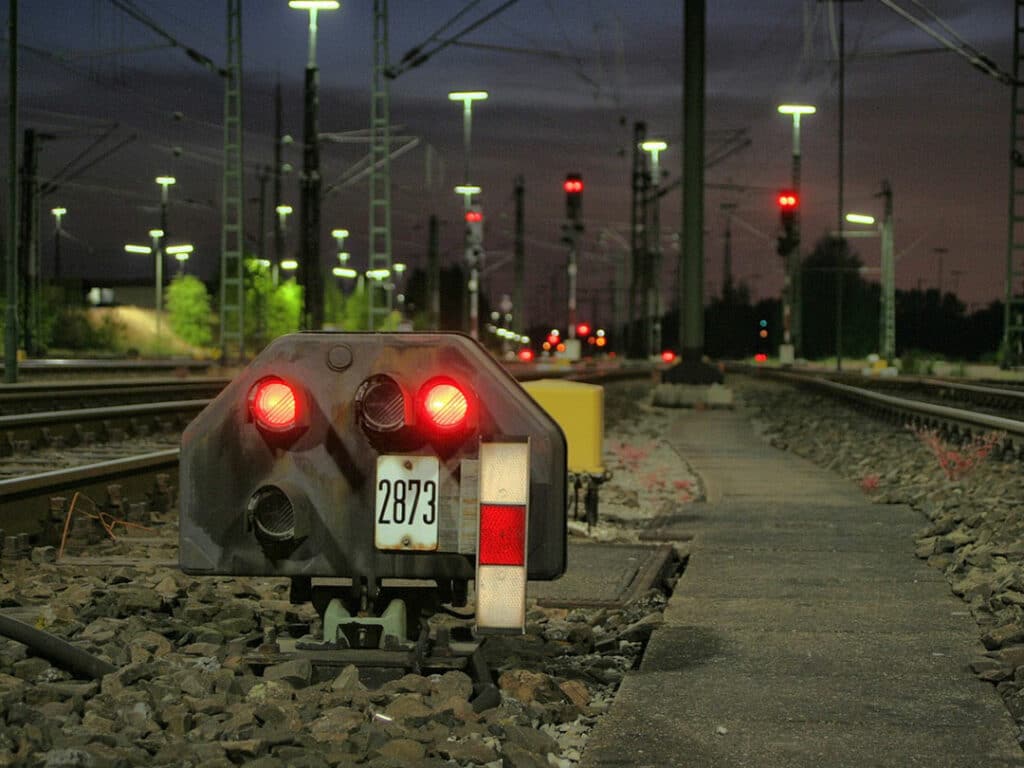As the world continues to evolve, so too does the field of railway signalling. With advancements in technology and a growing demand for efficient and safe transportation systems, changing trackside railway signalling has become a crucial focus for railway power and signalling companies. We explore the prospects and challenges associated with upgrading railway signalling systems, particularly focusing on the transition to active railway signalling.
The need for improved railway signalling systems
Signalling plays a vital role in ensuring the safety and efficiency of train operations. Traditional signalling systems, often relying on fixed signals and track circuits, have been in place for decades. However, these systems have limitations when it comes to handling increasing train traffic, meeting higher speeds and accommodating new types of trains including high speed trains. The need for improved railway signalling systems has become paramount to meet modern demands to ensure people can rely on our rail network for decades more to come.
A history of train signalling
Throughout history, all signalling has been designed on the basic concept that trains cannot collide with each other if they are not permitted to occupy the same section of track at the same time as each other. Tracks are therefore commonly divided into sections, known as blocks, where only one train is permitted in each block at any one time.
In the 1850’s train dispatchers were stationed at intervals along the track at each section, with stopwatches and provided train drivers with hand signals to let them know if a train was going to pass. At the turn on the 20th century, mechanical signals in the way of semaphores were introduced to help the staff. But it wasn’t until the 1930’s that optical signals were brought in along the railway network, which, alongside fixed mechanical signals and phone rings, allowed for the development of the semi-automatic block. Most signalling systems today run using a fully automatic block (interlocking) with no manual intervention required. Instead, electrical signals on a track circuit can determine whether a track is occupied and prevent multiple trains being able to travel on the same section of track.
In the 1970’s the signaling system was upgraded across the railway infrastructure with the expansion of Automatic Warning Systems (AWS), in the 1990’s this was then further enhanced with the introduction of Train Protection Warning Systems (TPWS). These systems sound a warning noise into the train cab should the top safe speed have been exceeded or if the driver had passed a red warning light, applying the brakes automatically to reduce the risk of a collision. Whilst some lines also got Automatic Train Protection (ATP), which provides even greater automatic speed and braking control, this was not deemed economically viable for the entire UK infrastructure.
Interoperability issue with modern signalling systems
We want trains to be able to travel a large distance and be operational on all areas of track, allowing for better international rail transport. Without modernisation to the signalling and trains in the UK, lack of interoperability is a major issue for our rail network.
Signal failure delays
Current signalling systems rely on lineside power supply to work across the railway system. Issues with this power supply (from a blown fuse to signalling cable theft) mean that the signalling system can fail and trains have to be stopped due to the risk of collisions.
Transitioning to active railway signalling
Network Rail, the main rail infrastructure company in the United Kingdom, oversees a vast network of both passenger and freight trains that requires efficient signalling systems throughout.
One of the key Network Rail modernisation principles is ‘digital rail‘ – upgrading Network Rail signalling, replacing outdated equipment with modern systems capable of handling increasing train volumes and reducing delays. Part of which is the implementation of active railway signalling.
Active railway signalling represents a paradigm shift in the way trains are controlled and monitored. Instead of relying solely on fixed signals, active signalling employs computer-based interlocking systems and continuous train-to-infrastructure communication, allowing for real-time information exchange. This enables more precise train control, enhanced capacity and improved safety. Active signalling systems hold the potential to revolutionise the railway industry by optimising train movements and reducing the need for physical infrastructure.
Train traffic lights: Enhancing safety and efficiency
Train traffic lights are an integral part of railway signalling, guiding train movements and maintaining safe distances between trains. Upgrading to a sophisticated traffic light system can provide several benefits to the rail network, including better visibility, more precise control, and the ability to adapt to changing conditions. Advanced technologies such as LED lights in trackside signals and intelligent control systems can improve visibility to train drivers. Swapping to LED technology on the 40,000 colour light signals across the Network Rail network will significantly reduce maintenance costs due to their longer lifespan than traditional light bulbs. Additionally, the integration of train traffic lights with train positioning systems can enhance operational efficiency and reduce the risk of collisions.
Uninterruptable power supplies
The roll out of uninterruptable power supply at functional supply points supplying power to signal boxes and the replacement of old cabling are two of the things that Network Rail are doing to enhance the reliability of the signalling across railway networks.
Implementation of European Train Control System (ETCS) technology
ETCS active signalling technology can enhance capacity, reliability, and flexibility across the network using automated, computer-based . These modernisation efforts aim to improve train performance, reduce maintenance costs, and increase overall network capacity by enabling trains to run closer together, at their highest speeds whilst still maintaining safe braking distances. The ETCS project was established in the late 1990’s although, development and roll out of the associated technology has been slow.
ETCS has 3 functional levels, based on how well equipped the trains and the tracks are and how the information is transmitted to the train: Level 1 can be superimposed on pre-existing signalling systems and uses the radio beacons to transmit track permissions to the train driver. Level 2 is a completely digital radio based system that encompasses signalling and train protection, all trains automatically report their location and direction and, alongside trackside signals, uses virtual signals on the in cab computer displays. Level 3 is a complete departure from the fixed block systems that have been in place since the 1800’s. Instead the in-cab technology continually monitors and feeds back its position with a high level of accuracy, comparing it to other trains. Instead of not allowing trains into the same block, the time interval system means that trains are able to travel within the same block as long as the minimum braking distance is maintained. This is known as a moving block.
Implementation of Level 3 ETCS will revolutionise railway networks and enable trains to travel without the need to rely on lineside signals or be disrupted due to trackside signal failure.
Challenges and considerations with ETCS
While the prospects of changing trackside railway signalling are promising, several challenges must be addressed during the transition.
- Infrastructure and Cost: Upgrading signalling systems requires significant investment in infrastructure, equipment, and training. Railway power and signalling companies need to carefully assess the costs involved and develop cost-effective implementation strategies.
- Interoperability: Ensuring seamless integration with existing infrastructure and the ability to communicate across different systems is essential for a smooth transition.
- Safety and Security: As technology becomes more integrated into railway signalling robust cybersecurity measures must be in place to protect against potential cyber threats and unauthorised access to critical systems.
- Stakeholder Collaboration: Effective communication and coordination between various stakeholders, including railway operators, infrastructure managers and regulatory bodies is essential to streamline the implementation process.
The prospects of changing trackside railway signalling are promising; offering improved safety, increased capacity and enhanced efficiency in train operations. Upgrading train traffic lights, modernising Network Rail signalling and transitioning to active railway signalling systems present opportunities to improve the capability of the rail network across the UK as well as allowing more seamless transition for travel into and across Europe.
Here at RSP we design, supply and build a wide range of Network Rail approved signalling products. Contact us for all your railway signalling needs.

